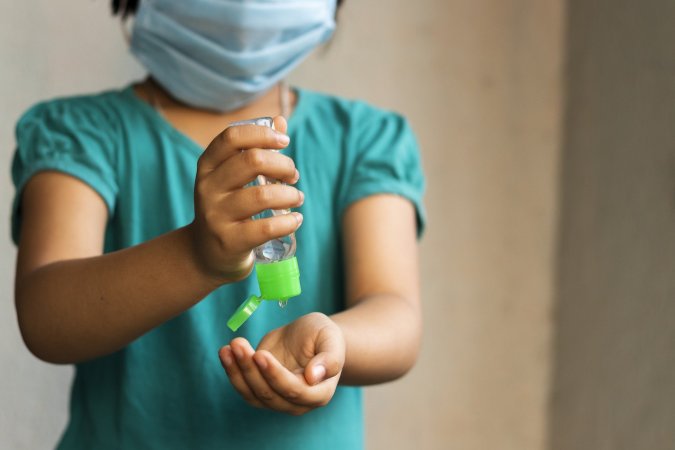

The COVID-19 pandemic caused a surge in demand for disposable plastics that has resulted in more than 25,000 tons of litter flowing into the world’s oceans, scientists in the United States and China reported on Monday.
The researchers estimated the amount of plastic waste generated by different countries, calculated how much was ferried to the sea by major rivers, and used computer models to simulate its journey through the global ocean. They found that the pandemic spawned more than 8 million tons of plastic debris from hospitals, personal protective equipment, and online shopping, and most of the waste that reaches the ocean will wind up in beaches and coastal sediments.
“This poses a long-lasting problem for the ocean environment,” the team, which included researchers from Nanjing University and the University of California San Diego’s Scripps Institution of Oceanography, wrote in Proceedings of the National Academy of Sciences. “We call for better medical waste management in pandemic epicenters, especially in developing countries.”
The emergence of COVID-19 represents the most severe pandemic yet to occur in an era of plastics and disposable items, noted João Canning Clode, a marine ecologist at Portugal’s Marine and Environmental Sciences Centre and the Smithsonian Environmental Research Center in Maryland, who has written about the potential ways that the COVID-19 pandemic could exacerbate marine pollution.
As cases climbed, reaching 212 million people worldwide by August 23, 2021, so did the amount of medical waste that contained plastic. This included COVID-19 testing kits and personal protective equipment such as face masks, gloves, and face shields. Single-use items such as plastic cutlery were also used to minimize the risk of spreading the novel coronavirus, particularly before vaccines became available, Canning Clode told Popular Science in an email.
Meanwhile, people turned to online shopping at an “unprecedented speed,” the researchers wrote. The material used to package these orders became another source of excess plastic.
Not all of this plastic is processed properly or recycled, and some of the mismanaged waste will eventually find its way to rivers and the ocean. According to one estimate, about 1.56 billion face masks entered the seas in 2020. All this debris poses a number of threats to marine animals, which may eat or become entangled within the plastic.
To find out how much plastic waste has been created because of COVID-19, the researchers considered a variety of data sources, such as statistics on population, mask production, and COVID-19 infections, tests, and hospitalizations, as well as financial reports from Amazon, Walmart, and other top e-commerce companies.
[Related: How long will we keep wearing masks?]
As of late August 2021, they estimated, 193 countries had generated about 8.4 million tons of pandemic-related plastic waste. Hospitals contributed an estimated 87.4 percent of the trash, while personal protective equipment used by the general public accounted for 7.6 percent, and online shopping and COVID-19 test kits contributed, respectively, only 4.7 percent and 0.3 percent.
A whopping 47.6 percent of confirmed COVID-19 cases have occurred in the Americas, followed by 31.22 percent in Asia and 17.26 percent in Europe. However, the continent that contributed the most plastic waste was Asia (an estimated 46 percent), followed by Europe (24 percent) and North and South America (22 percent).
While online shopping—and, on the bright side, mask wearing—were more prevalent in Asian countries, the study authors note that flawed existing systems for dealing with medical trash likely accounted for most of the gap. “The biggest sources of excess waste were hospitals in areas already struggling with waste management before the pandemic; they just weren’t set up to handle a situation where you have more waste,” Amina Schartup, an assistant professor at Scripps Oceanography, said in a statement.
The team next investigated how much of this excess plastic would enter and be carried out to sea by 369 major rivers and their watersheds, based on the speed and other characteristics of the rivers. They calculated that about 25,900 tons of plastic would reach the oceans, representing around 1.5 percent of the total plastic waste discharged by rivers worldwide. The top debris contributors were the Shatt al Arab, Indus, Yangtze River, and Ganges Brahmaputra in Asia, followed by the Danube in Europe, and the Amur in Asia, highlighting hotspots that will require “special attention in plastic waste management,” the researchers wrote.
Finally, the team used a computer model to simulate how this litter will move through the oceans, taking into account how seawater circulates and how several different kinds of plastic might become fragmented or otherwise altered during their travels. They found that most of the plastic waste will land on beaches and seabeds within three years. However, the Arctic Ocean will likely become a dead-end for some of it.
“The Arctic ecosystem is considered to be particularly vulnerable due to the harsh environment and high sensitivity to climate change, which makes the potential ecological impact of exposure to the projected accumulated Arctic plastics of special concern,” the researchers concluded.
While several highly effective COVID-19 vaccines are available in the United States and abroad, the pandemic isn’t quashed yet. By the end of 2021, the researchers estimate, a total of 11 million tons of excess plastic will have been generated, and rivers will have carried 34,000 tons of this waste to the sea.
It’s worth remembering, of course, that the excess waste generated because of the pandemic makes up just a small fraction of a much larger plastic problem. “The ongoing assembly of trash, plastics and debris in the ocean is severely affecting marine life, and today marine litter is considered as one of the most relevant pollution problems the planet is experiencing,” Canning Clode said.
To quash plastic waste, the researchers say, it will be important to improve plastic waste collection, treatment, and recycling technology; develop more eco-friendly alternatives; and raise awareness among the general public about the environmental impacts of personal protective equipment and other plastic products.























